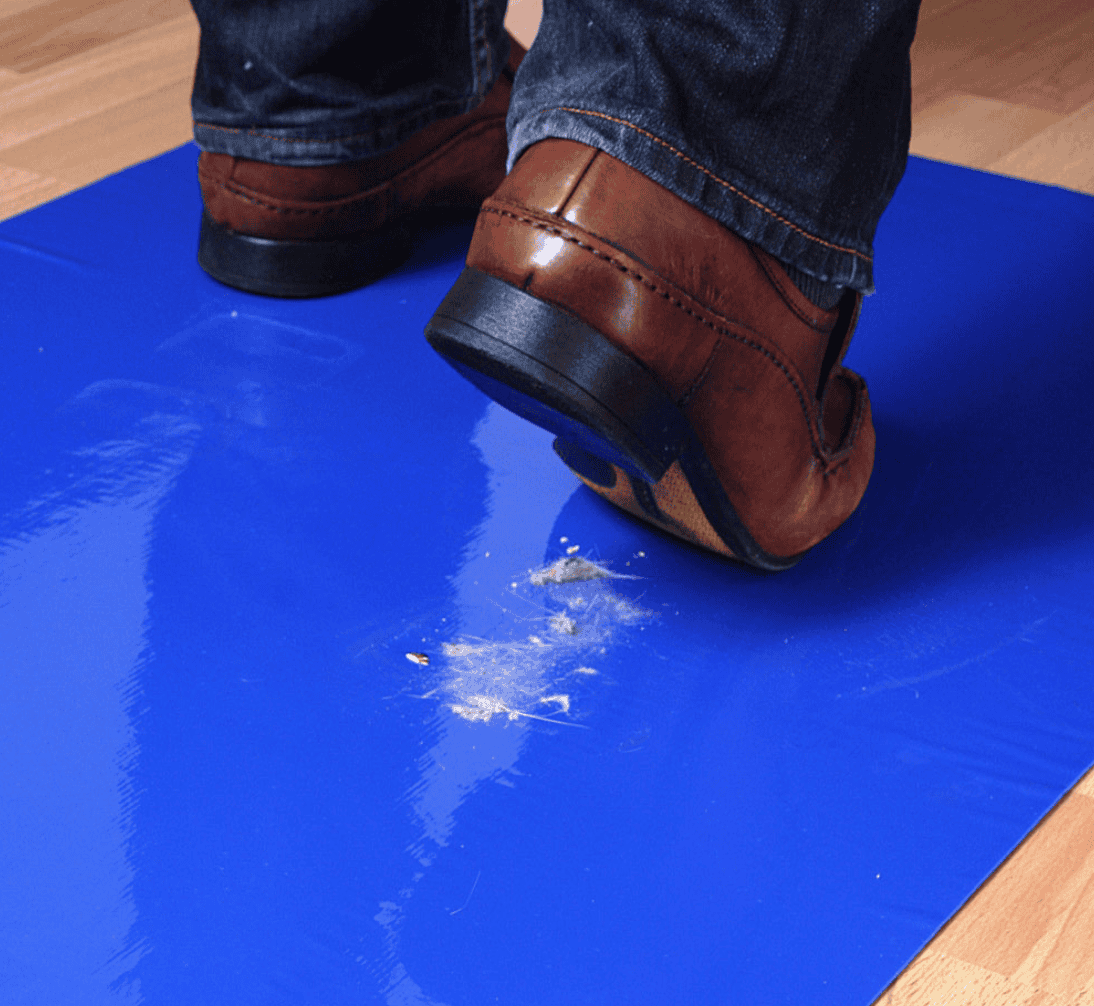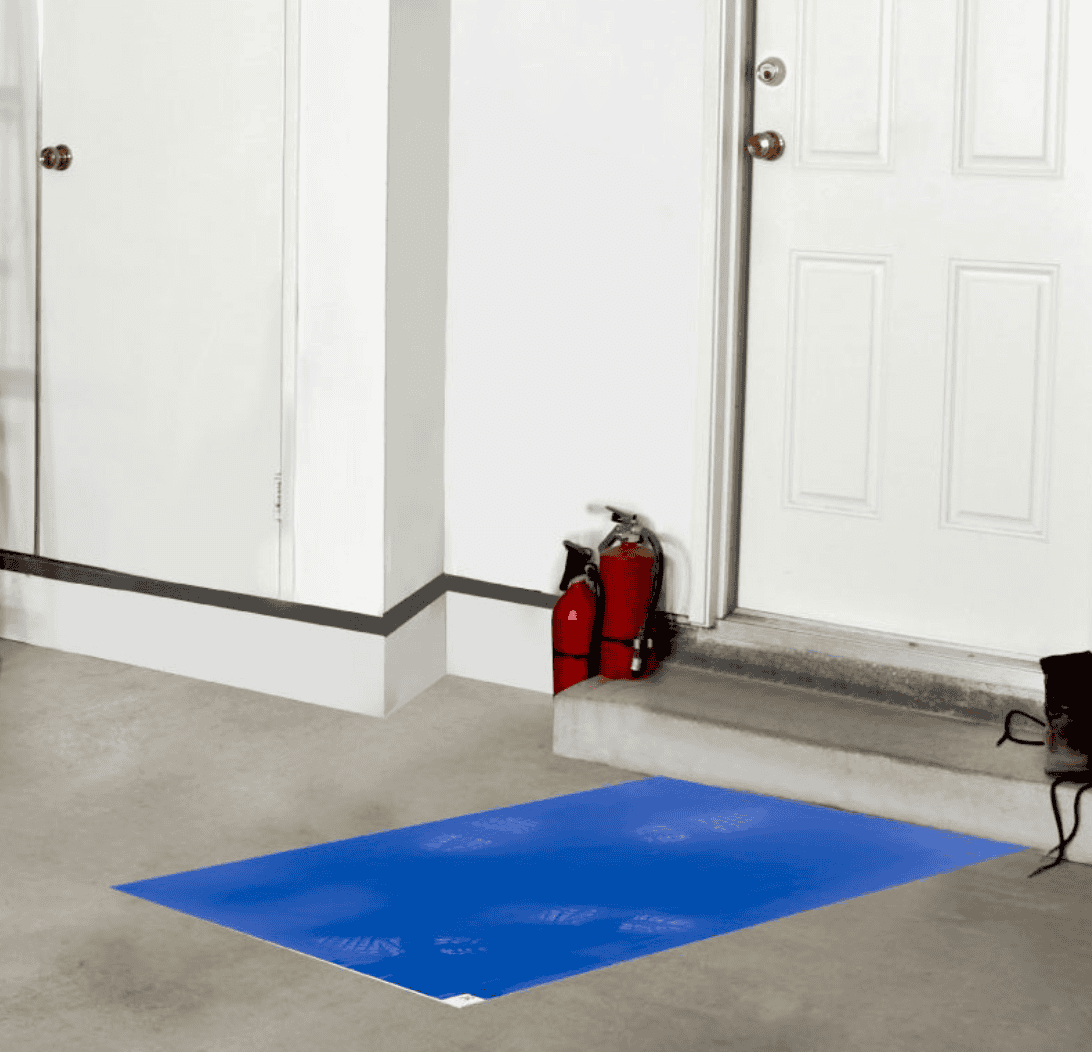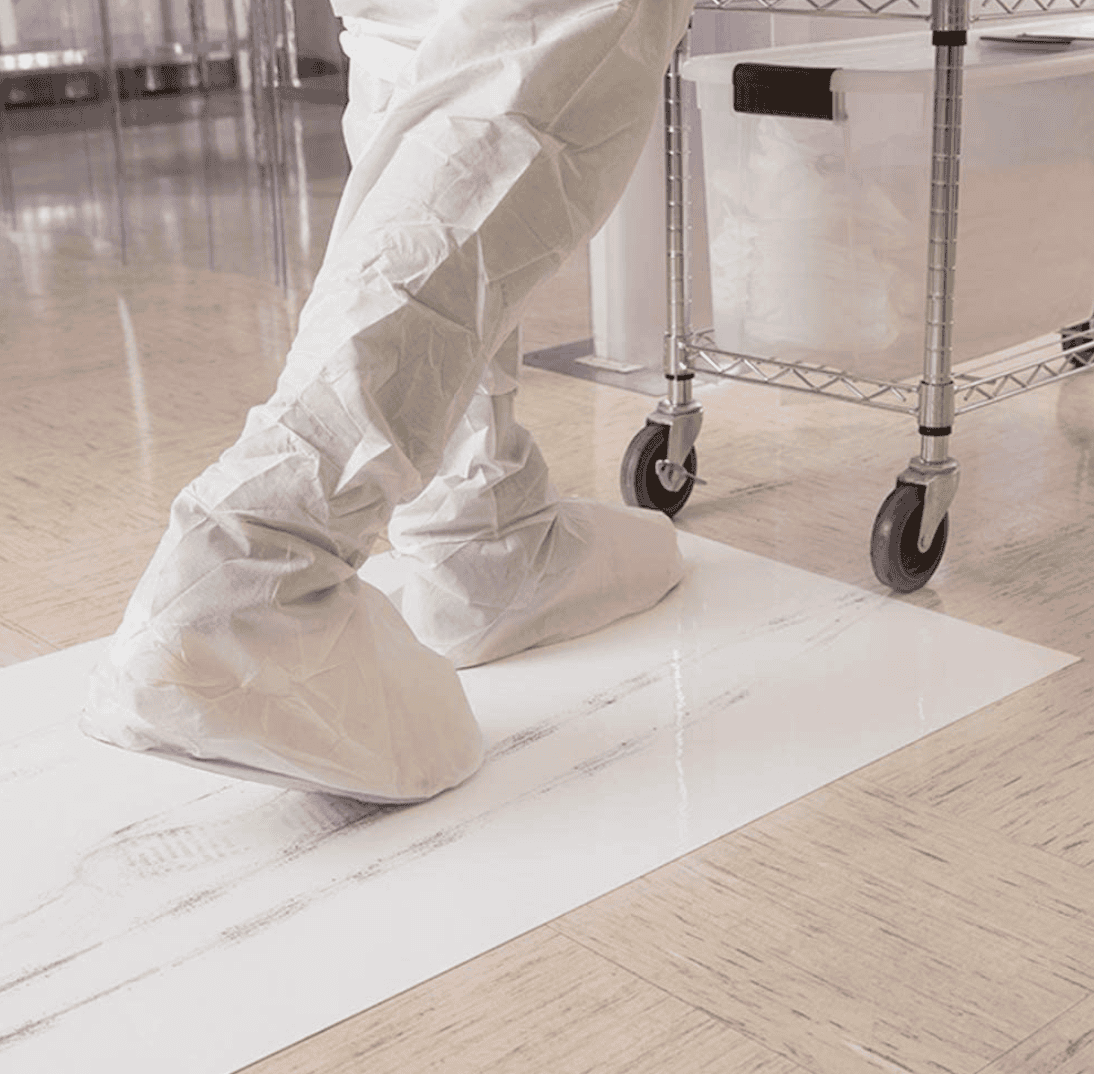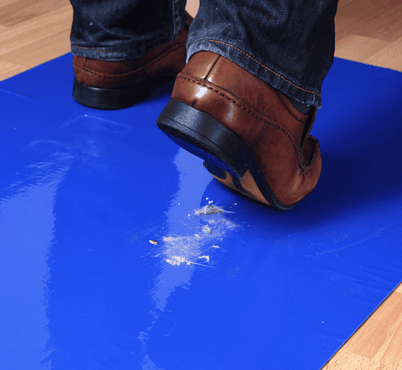Posted by Spycor LLC on Sep 26th 2025

Keeping dust, dirt, and contaminants out of your workspace is a challenge, whether you're managing a bustling construction site, maintaining a sterile cleanroom, or protecting your home during a renovation. Enter tacky mats—also known as sticky mats or adhesive mats—a simple yet powerful solution for capturing particles before they spread. These specialized dust control mats are a game-changer for industries like construction, healthcare, and manufacturing, as well as for homeowners tackling DIY projects. But with so many options available, how do you pick the best tacky mats for your specific needs?
This guide dives deep into everything you need to know about selecting top-quality tacky mats. From size and adhesive strength to practical applications and cost considerations, we’ll cover the key factors that ensure you get the most effective contamination control mats for your environment. Whether you're a contractor aiming to keep job sites clean, a lab manager ensuring ISO compliance, or a homeowner minimizing mess, this article will help you make an informed choice.
What Are Tacky Mats and How Do They
Work?

Tacky mats, often called sticky mats or adhesive mats, are multi-layered floor coverings designed to trap dirt, dust, and contaminants at entryways. Made from polyethylene film coated with a low-tack acrylic adhesive, these mats typically consist of 30 or 60 peel-off sheets stacked together. The bottom layer adheres securely to the floor, while the top layers use a sticky surface to capture particles from shoes, boots, or equipment wheels as they pass over.
The process is elegantly simple: when someone steps on a tacky mat, the adhesive grabs contaminants without leaving residue on footwear. This is especially effective for fine particles that traditional mats might miss. Once the top sheet becomes soiled—visible through dirt buildup—you peel it off using a numbered tab to reveal a fresh layer. This disposable design ensures consistent performance without cleaning or maintenance between uses.
Available in colors like blue, white, or clear, tacky mats suit various settings. White mats are ideal for sterile environments where visibility of dirt is key, while blue blends into industrial spaces. Standard sizes range from 18" x 36" for small doorways to 36" x 60" for high-traffic zones, accommodating both pedestrians and light wheeled carts.
Tacky mats evolved from basic door mats in the mid-20th century to meet the needs of sensitive industries like electronics and pharmaceuticals. Today, they’re a staple in dust control, with eco-friendly options using recyclable materials to minimize environmental impact. Understanding their design and function is the first step to choosing the right mat for your space.
Why Tacky Mats Are a Smart Investment
Tacky mats offer a range of benefits that make them indispensable for maintaining clean environments. Here’s why they’re worth considering:
-
Superior Dust Control: By trapping particles at entry points, sticky mats significantly reduce airborne dust, protecting sensitive areas like cleanrooms or construction zones from contamination. This is critical for maintaining air quality and equipment functionality.
-
Cost Savings: Tacky mats cut down on cleaning expenses by preventing dirt from spreading. Facilities report up to 50% reductions in floor maintenance costs, as less debris means fewer deep cleans. Their disposable nature eliminates washing or upkeep costs.
-
Health and Safety: In healthcare, contamination control mats reduce infection risks by capturing pathogens on footwear. In cleanrooms, they ensure compliance with ISO standards, preventing costly shutdowns. Even in homes, they lower allergen levels, benefiting those with respiratory issues.
-
Ease of Use: Installation is as simple as peeling and sticking, and replacing soiled layers takes seconds. Numbered tabs make peeling effortless, saving time for busy teams.
-
Versatility: Tacky mats work on various surfaces (concrete, tile, or carpet with frames) and handle both foot and light wheeled traffic. Antimicrobial options enhance their utility in sterile settings.
-
Eco-Friendly Options: Many modern adhesive mats, like those from Spycor Environmental, use recyclable polyethylene, aligning with sustainable practices. They also protect flooring from abrasive wear, extending its lifespan.
These benefits make tacky mats a cost-effective, practical solution for anyone prioritizing cleanliness and efficiency. When choosing, focus on options that maximize these advantages for your specific environment.
Key Factors to Consider When Choosing
Tacky Mats
Selecting the best tacky mats requires careful consideration of several factors to ensure they meet your needs. Here’s a breakdown:
1. Size and Dimensions
Match the mat’s size to your space and traffic volume. Common sizes include 24" x 36" for standard doorways and 36" x 45" for larger entrances. For optimal dust capture, ensure the mat allows at least two steps per foot—typically 45" or longer. Measure your entry points and consider multiple mats for wider areas. Undersized mats may miss particles, while oversized ones can be impractical.
2. Layer Count and Durability
Layer count determines how long a mat lasts. Standard 30-sheet mats suit moderate use, while 60-sheet options are better for high-traffic areas like construction sites. Look for numbered tabs for easy peeling and antimicrobial coatings for hygiene. Thicker polyethylene (around 2 mil) ensures durability under wheeled traffic.
3. Adhesive Strength and Type
The adhesive is critical for effective contamination control. Low-tack formulas (around 160g/25mm) balance safety and particle capture, preventing tripping while grabbing dust. Acrylic adhesives are non-toxic and cleanroom-safe, avoiding off-gassing. Test compatibility with your flooring to prevent residue.
4. Material and Color Options
Polyethylene is standard for its strength and recyclability. White mats highlight dirt in sterile settings, while blue suits industrial aesthetics. Some mats include frames for portability or carpet use, enhancing versatility.
5. Application and Environment
Choose mats based on your setting. Cleanroom mats require high particle retention for ISO compliance, while dust control mats for construction prioritize durability. Store mats at 40-95°F to maintain adhesiveness.
6. Cost and Value
Balance upfront cost with longevity. Packs of 4-8 mats offer better value for frequent replacements. Premium brands like Spycor Environmental provide superior capture rates, reducing long-term costs.
7. Brand and Supplier Reliability
Opt for trusted suppliers with warranties. Spycor Environmental specializes in surface protection, ensuring high-quality tacky mats tailored to your needs.
By evaluating these factors, you’ll find sticky mats that deliver maximum performance and value.
Where and How to Use Tacky Mats

Tacky mats shine in a variety of settings, making them a versatile choice:
-
Construction and Renovation: Dust control mats contain debris during abatement or remodeling, protecting adjacent areas and reducing cleanup time. They’re ideal for drywall or demolition projects.
-
Healthcare Facilities: Sticky mats at hospital entrances trap pathogens, lowering infection risks. They’re critical in operating rooms and isolation wards.
-
Cleanrooms: In pharmaceuticals and electronics, cleanroom mats maintain ISO standards by capturing microscopic particles, preventing costly contamination.
-
Industrial Workshops: Tacky mats keep machinery and air clean by trapping dust from heavy boots or equipment.
-
Home Use: During DIY projects or camping, adhesive mats keep interiors free of dirt and mud, protecting floors and carpets.
How to Install and Maintain Tacky Mats
Installing tacky mats is straightforward: clean the floor, peel off the backing, and press down firmly. For maintenance, check mats daily and peel off soiled sheets when they lose tackiness or look dirty. Peel slowly to avoid releasing particles. Store mats in cool, dry conditions (40-95°F) to preserve adhesive quality.
Tacky Mats vs. Traditional Mats: Which Is Better?
Compared to reusable traditional mats, tacky mats offer superior particle capture, especially for fine dust. They require no washing, saving time, but need periodic replacements. Traditional mats are cheaper long-term for low-dust areas but less effective for contamination control. Choose based on your cleanliness needs.
Ready to transform your space with top-quality dust control? Click Here to explore the best tacky mats at Spycor Environmental and keep your environment clean and safe.
FAQ: Top Questions About Tacky Mats
Where should I place tacky mats for maximum effectiveness?
Place them just outside entryways, gowning areas, or buffer zones. Ensure enough length for several steps (at least 45") to capture maximum contaminants.
Are tacky mats required for all cleanroom classes?
While not mandatory, they’re highly recommended for all controlled environments to maintain cleanliness and meet ISO standards.
How often should I replace the top sheet?
Peel off the top sheet when it’s visibly soiled or loses tackiness, typically every few days in high-traffic areas like construction sites.
Are tacky mats safe for kids and pets in home use?
Yes, their low-tack, non-toxic acrylic adhesive is safe, posing no sticking or health risks.
How sticky are tacky mats?
They’re sticky enough to trap dust (160g/25mm adhesive strength) but not so strong as to cause tripping or residue issues.
Can tacky mats be used on carpeted surfaces?
Yes, with optional frames for stability, though they adhere best to hard surfaces like tile or concrete.
Are tacky mats environmentally friendly?
Many, like Spycor’s, use recyclable polyethylene, reducing environmental impact while maintaining performance.



